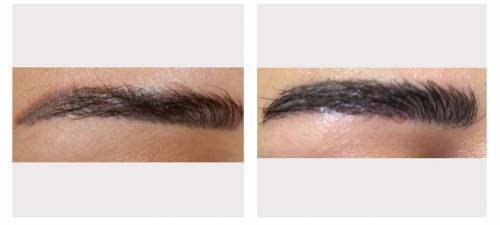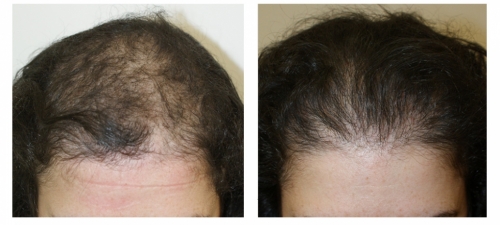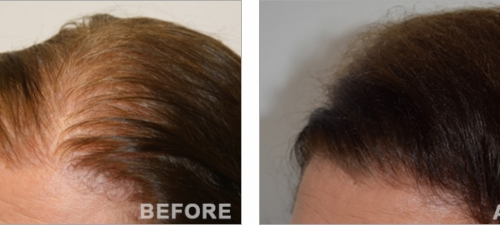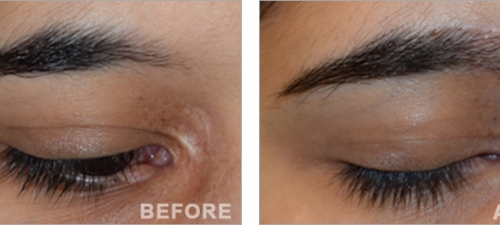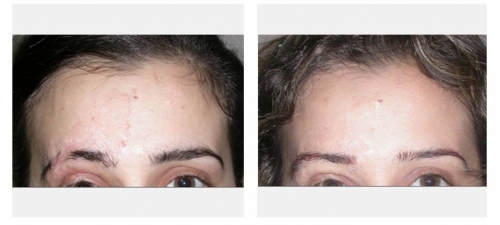Hair loss for Women
Hair loss causing thin hair, or in extreme cases, baldness, is a common problem of women in the Middle East and can be devastating. Hereditary factors are the most common, but hormonal problems, medications, certain diseases or stress are often a triggering factor. Hair loss of less than 100 hairs each day, especially in the summer or after pregnancy is often normal. However, hair loss of over 100 hairs each day, sustained over weeks is a cause of concern, and usually warrants testing and treatment. Many women have deficiencies in Iron, Vitamin D, Biotin, or other vital elements for hair vitality, and respond to supplementation. Post-partum hair loss is due to the sudden cessation the growth factors circulating during pregnancy and make the fetus (and its mother’s hair) grow. It is in fact these growth factors that circulate normally in plasma, though at lower levels, that cause improvement of hair growth when PRP is done. Hormonal problems such as thyroid abnormalities or ovarian cysts can also cause hair thinning in women, and need to be checked when suspected so that treatment is started. Aldactone (spironolactone) is given for polycystic ovaries, sometimes in coordination with an endocrinologist or a gynecologist. Stress management is always important in any hair loss treatment protocol.

Female Pattern Androgenetic Alopecia
When women are affected by heredity thinning, or androgenetic alopecia, the problem is usually more subtle than men, may begin later in life, and leads to a progressively lesser density of the hair over the top of the scalp, with more and more of the skin of the scalp showing, especially when outdoors. The back of the scalp might be spared or affected.
In the case of androgenetic alopecia, using topical minoxidil applications, has an effect of stabilizing hair loss and in many cases can lead to hair regrowth. It should only be stopped in case of allergy. In men and in postmenopausal women, Finasteride can be taken to further address the problem, and reserve hair loss by blocking the formation of dihydrotestosterone (DHT), which executes the thinning process. Many patients have a visible increase in-density while on Finasteride. Its side effects of sexual dysfunction are extremely rare, especially at the reduced dose prescribed by Dr Touma. People with depression should also be careful about taking it. These medications however need to be taken long term, since it takes between 3 and 24 months to see the full benefit, and results will be maintained as long as the medications are not stopped.
Platelet with plasma, is currently a key component of hair loss therapy. It involves the extraction of plasma from the patient’s blood through a blood draw done by our nurses in the clinic. Plasma provides all the nutritional value in the blood, and as it is injected into the scalp, provides a much appreciate growth boost to the hair follicles. PRP is recommended in a series of three-monthly injections and a single session every three months for maintenance. Our patients find it very useful for thickening the hair especially in women.
Another treatment commonly prescribed by Dr Touma is red light in the clinic or at home which stimulates the growth phase of the hair cycle. It is a small but good effect on the long term.
Hair transplantation is a very effective and safe method of restoring a natural hair density in both men and women. Ideal candidates are those that have cosmetically noticeable thinning that cannot be improved with medical therapy alone. Hair transplantation is a very simple and safe procedure, and does not requires shaving the hair.
A strip of hair and skin is taken from the back of the scalp were hairs are usually abundant and the defect is stitched as an almost invisible fine line. The hairs of the strip are then separated under the microscope and re-implanted into the balding areas, one hair at a time (micrografts) in order to obtain a natural result. The whole procedure is done under local anesthesia and with very little inconvenience post-operatively. The implants are 1mm long, and it takes 18 months to see the full result. One or two sessions are generally enough for most people. Eyebrows, side burns (especially after face lift surgery) and other areas of the body can be treated as well.
Follicular units (FUEs) can be extracted once at a time as an alternative to the strip, but this option is impracticable in women as it requires shaving an area of the of the donor site.
Dr.Touma specializes in the latest, safest and fastest techniques of micrograft hair transplantation and combines his skill with his esthetic sense in order to obtain the most natural results of hair restoration. His experience in all the techniques of hair transplant for over 20 years allows him to advise his patients on the best and most cost-effective approach for them.



